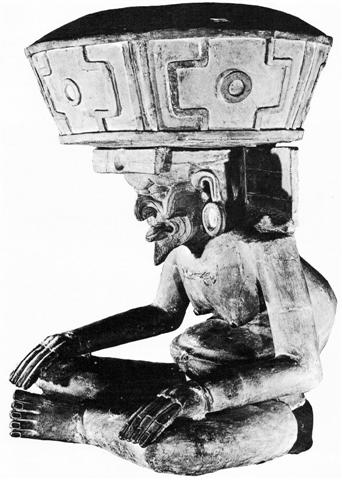2. The synodic period of Mercury is 116 days, short because of how close the planet is to Sun. The 4 chevron marks in Hb9-38 can maybe be understood as a reference to this 4-month long orbital cycle, because 4 * 29 = 116.
The front side is characterized by number 26 (Sun) and the back side by number 29 (Mercury). The hard fact of 4 * 29 = 116 as the orbital period of Mercury may have induced the similar calculation of 4 * 26 = 104 as a period prior to the appearance of Sun at the beginning of the front side:
A single 'bubble' at the top end of the 'tree' could allude to the single eye of Sun in the sky, but this does not arrive until after 4 * 26 = 104 days have passed. In Eb7-3 (where Venus should be) there are 2 'eyes', presumably her morning and evening 'stars', and possibly also the 'stars' which once generated the game of Cat's Cradle. Half a year with Sun present will follow after the back side has ended with Saturn in Eb7-4. The back side is beginning with Mercury, the planet closest to Sun, and it ends with Saturn, the planet most far away (high up) from the Sun. Time on the back side moves from the youngest and lowest of the planets to the oldest and highest, who therefore must be quite dry. Saturn is the one in charge of generating the new fire. In Eb7-4 the glyph type is vai, the 'living water' of the sort which Sun carries in his eye. Below is a picture of the Lord of Fire:
"Xiuhtecuhtli, the fire god, as Huehueteotl, 'the old god at the centre'. One of the oldest deities of ancient America, this clay figure from the Veracruz culture shows him seated with a brazier on his head. Xiuhtecuhtli was lord of the present 'Sun', or era, his ceremonies being particularly important at the end of every fifty-two-year cycle when all fires were put out and a fresh one was kindled on a prisoner's breast in order to keep time moving." (New Larousse Encyclopedia of Mythology) |
||||||||||||||||||||||||||||||||||||||||||||



